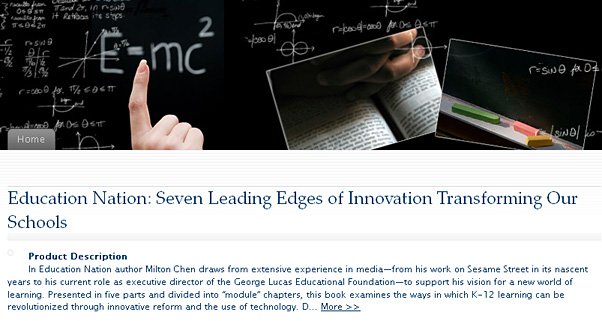From the Product Review section at Amazon.com
In Education Nation author Milton Chen draws from extensive experience in media—from his work on Sesame Street in its nascent years to his current role as executive director of the George Lucas Educational Foundation—to support his vision for a new world of learning. Presented in five parts and divided into “module” chapters, this book examines the ways in which K-12 learning can be revolutionized through innovative reform and the use of technology.
Due in large part to new technologies, over the last few decades we’ve witnessed a huge shift in how we imagine teaching and learning. A good example is the educational revolution sparked by Sesame Street—which in its first season had a goal of teaching preschool-age children the numbers 1 to 10. At the time, experts dismissed it as an unrealistic goal since many kindergarten students were having trouble mastering this simple counting. Yet the research proved that preschool-age children learned those skills and many others directly from the TV screen. Now Sesame Street’s curriculum teaches the numbers from 1 to 40. In today’s digital age the number of new ways to teach and learn is ever-expanding and includes: television, Google, YouTube, TeacherTube, Facebook, iPhones, video games, GPS devices, open source textbooks, interactive whiteboards; and there are countless examples of ways technology positively impacts student learning—from voice-recognition software that helps children learn to read to translation tools that help teachers communicate with non-English speaking parents. As a result of constant innovation, learning is no longer limited by traditional confines and we’re quickly moving beyond students tied to their chairs, desks, and textbooks—and teachers locked away in classrooms (emphasis DSC).











